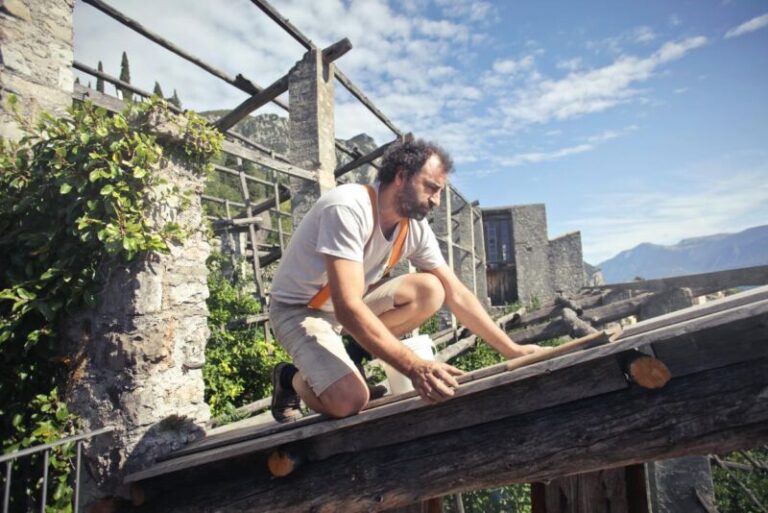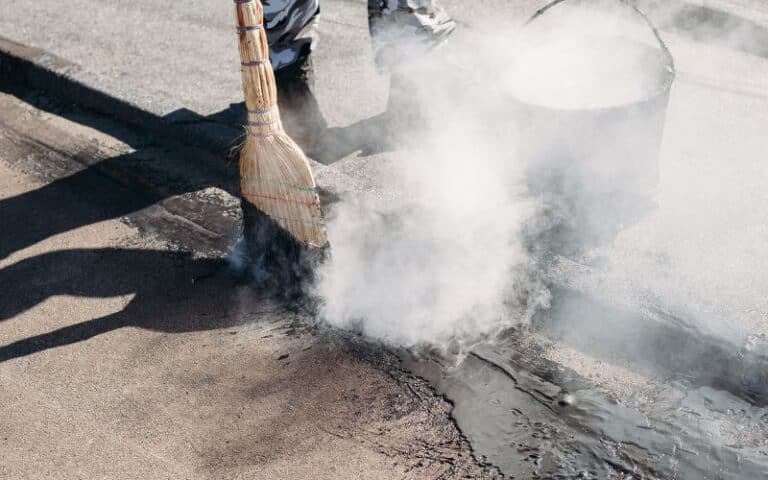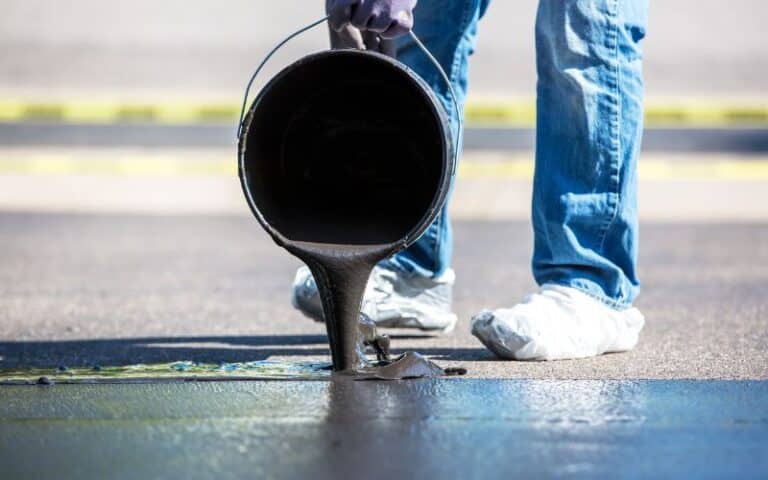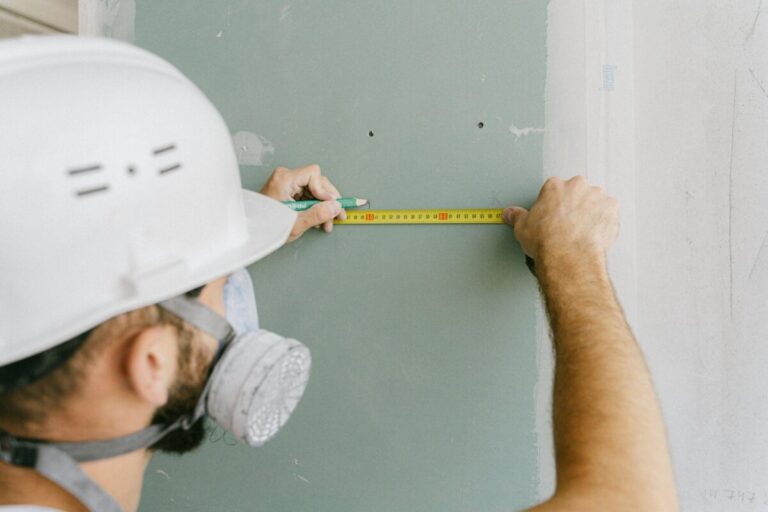Roof tar, also known as bitumen or asphalt, is a black gooey substance used to fill cracks in roofs and around chimneys and vents.
Roofers use roof tar because it provides an excellent seal that keeps water out (which prevents roof leak repair) and layers of roofing together.
Asphalt is ideal for this purpose because it does harden—but even when hardened, asphalt’s composition makes it naturally more flexible than other materials such as cement or caulk.
That flexibility helps the material stay strong under stress caused by movement in the home’s framing (such as during earthquakes) or expansion and contraction due to temperature changes.
The short answer is yes. The extended version is: roofing tar does harden up, with the curing process taking anywhere from 8 to 24, but sometimes it doesn’t, and even if it does, that doesn’t always mean you can’t soften it back up again.
Ready for a Roofing Quiz?
Does Roofing Tar Dry Hard?
Whether or not roofing tar hardens depends on the circumstances surrounding its storage. If you store it improperly, roofing tar will eventually harden and become impenetrable at some point.
There are lots of ways to keep your new roofing tar from drying out, but only the major ones are below:
- Please keep it in a cool place: Roofing tar remains fluid at low temperatures, but as the temperature around it increases, the tar will begin to dry up and become solid.
- Use heat to soften it: The easiest way to soften hardened roofing tar is by using a propane torch to heat the surface of the roofing tar.
First, begin heating the surface of the hardening tar and continue until you have smoothed out a soft section to spread with your trowel or brush.
A propane torch is for melting ice and snow, cleaning parking lot markings, thawing frozen pipes and equipment, and melting/softening tar and asphalt.
- Add water: While this can lead to globs of goop, adding small amounts of water can help you work with your hardened roofing materials.
How Long Does Roofing Tar Take To Dry?
I know you’re excited about the job, but don’t get out a ladder just yet. After you apply roofing tar, you have to be patient.
Roofing tar takes at least 24 hours of dry weather, with temperatures above 35 degrees Fahrenheit, before you can walk on it safely.
If you live in an area where rainstorms are common and summers tend to be cool or foggy, your patch could take weeks or months to cure fully.
In addition, sunlight speeds up the drying process so that direct sunlight may make your roofing tar hard within 24 hours.
Hardening times depend on other factors, too—for example, some types of roof tar are specifically for a faster drying time than others; some brands promise quick curing within hours rather than weeks (although these products may be more expensive).
But all types of bitumen require good ventilation while curing: if it’s insulated, it won’t adequately set up into an effective sealant waterproof barrier.
For safety reasons, though, I recommend waiting longer—primarily if you used tar that requires mixing before use.
You never know how much time it takes to mix or whether there was enough mixing to ensure the ingredients are combined adequately.
Plus, when using a liquid tar that needs some heat before use (like asphalt), there’s no way to know how hot the mixture got during heating and application.
So if it wasn’t hot enough or cooled too fast while being applied, this could result in an uneven drying process that requires more time for everything to dry thoroughly (and stay put).
If the roof is not in good condition, it can lead to other problems with your house. In addition, it can cost you a lot of money over time.
Roofing tar can effectively seal leaks, but it is crucial to apply it properly to prevent future roof leak repair.
If you’re in a hurry to dry the roofing tar and are unwilling to wait for the sun to do its magic, your best bet is to use a dryer. You’ll increase the drying process by directing heat at the roofing tar.
This action will eventually make the roofing tar hard. Just make sure that you don’t overheat the roofing tar and cause damage.
A hairdryer works best for this because it runs at a lower temperature than most heat guns.
Related: Will Paint Cover Roof Tar?
How Long Does Roofing Tar Last?
Many homeowners have questions about the lifespan of roofing tar. The good news is that we’ve got the answers, and they’re relatively straightforward.
So, how long does roofing tar last? It varies depending on your climate and a few other factors. Roofing tar lasts for an extended period of between 20-and 25 years.
Just like roofing cement, always remember that when fixing a leak or a hole in your roof, you should never use roofing tar because it is only a temporary solution to the problem.
However, when roof cement hardens, it is a tremendous advantage for roofs facing climate changes and harsh weather conditions.
Extreme weather conditions that could damage other roofing materials, eventually leading to emergency roof repairs, won’t affect roofing cement.
Despite that, you should apply roofing cement only in dry conditions, this will make roofing cement dry, and then the roof cement hardens.
The noticeable difference between roofing cement and roofing tar is that roofing tar is water-resistant. In contrast, roofing cement can create a layer or barrier preventing water from getting through the roof.
Roofing tar comes with many emergency roof repairs as it is only water-resistant and can only last for so long.
Meanwhile, roofing cement forms a waterproof barrier that prevents water or snow from leaking through the roof.
But it’s important to note that roofing cement only lasts for three to seven years when taken care of properly. Do not be confused. That’s the lifespan of roofing cement.
I recommend using roofing cement instead of roofing tar when fixing leaks and cracks in your roof.
Related: Will Rolled Roofing Stick To Tar Shingles?
How To Soften Roof Tar?
After you apply roofing tar, it can get complex and challenging to work with when it dries.
When this happens, you can soften it by heating it. However, keep in mind that you should only heat the roofing tar on a dry day.
To heat roofing tar, use a propane torch and heat the area around the hardened tar for about 10 seconds or until the surrounding area becomes quite warm.
Heating it reduces its viscosity and makes it easier to handle. In addition, the warmth will help soften it up to remove it more easily.
If needed, heat the roofing tar repeatedly until it is soft enough to remove it from your roof.
Also, as your roofing tar heats up and gets soft, you should add warm water to help soften the roofing tar.
Conclusion
Your roof is the most critical part of your home. You should always apply roofing tar when hot and soft, allowing it to dry faster on your roof.
This action will ensure that the tar does not get hard and brittle before you can apply more layers.






